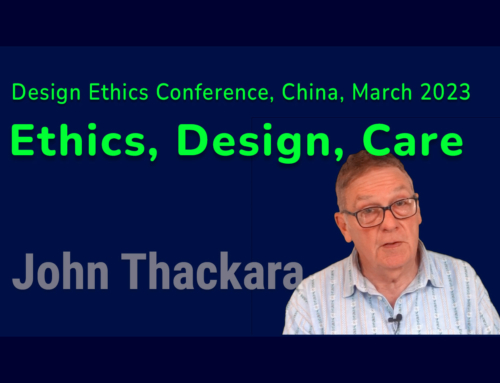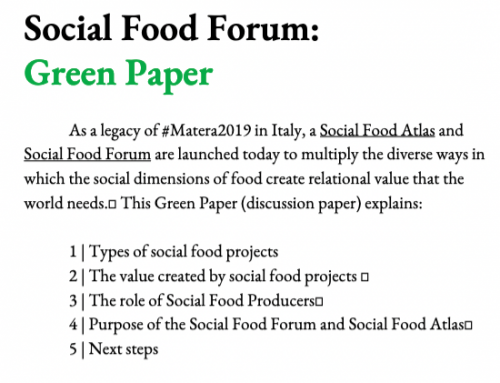1. TOM MURPHY – DO THE MATH
If you suspect, but cannot prove, that modern life simply does not add up, you’ll love Tom Murphy’s work. His focus, as a physicist, is to understand whether the impossibility of indefinite physical growth – for example in energy, food, or manufacturing – means that economic growth in general is also fated to end or reverse. He remains perplexed by our collective blindness to a simple fact: It takes energy to obtain energy – the very commodity that is in short supply. He concludes in a matter-of-fact way: “Global transportation means pushing through air or water over vast distances that will not shrink. Cooking means heating meal-sized portions of food and water. (and so on). Can all of these things be done more efficiently? Absolutely. Can (these efficiency gains) go on forever to maintain growth? No.” Murphy posted a very handy chart that ranks competing energy sources against a series of criteria: Alternative Energy Matrix See also these three texts, which go together: Galactic Scale Energy Can Economic Growth Last? What Does Sustainability Mean?
2. HOWARD T ODUM – ENERGY, ECOLOGY, ECONOMICS
Howard T. Odum was an American ecologist who explained human economics using ecology and energy fundamentals. His 1974 “Energy, Ecology, & Economics” helps explain why consumption and expanding technologies have limits. A Prosperous Way Down, (2001, with his wife Elisabeth), proposes solutions. Odum’s energy economics begins with an understanding that energy provides the foundation for all life processes – but that all energy is not equal. As energy is transformed through an ecosystem, quantity decreases as concentration increases. Odum coined the word “emergy” to account for the variations of energy quality. Energy, Ecology, & Economics
3. HERMAN DALY – STEADY STATE ECONOMY
Herman Daly, an American ecological economist, explains that “the reason so much debt has been incurred is that we have had absurdly unrealistic expectations about growth. We never expected that growth itself would begin to cost us more than it was worth, making us poorer, not richer. But it did”. And the only solution our economists, bankers, and politicians have come up with is more of the same! Could we not, Daly asks, at least take a short time-out to discuss the idea of a a steady-state economy? Steady-state Economy
4. UGO BARDI – ENTROPY, PEAK OIL, AND STOIC PHILOSOPHY
There are thermodynamic constraints to the system that we cannot dismiss – even though these limits may not appear in economics textbooks. “The final result is collapse in one form or another. We cannot avoid it” writes Ugo Bardi, who teaches physical chemistry at the University of Florence. A self-described stoic scientist, Bardi quips: “What is collapse, after all, other than a period in which things are changing faster than usual”. Peak Oil Thermodynamics and Stoic Philosophy Peak Civilization: The Fall of the Roman Empire
5. IVAN ILLICH – ENERGY AND EQUITY (1973)
Energy & Equity, first published in Le Monde in early 1973, observed that “it has recently become fashionable to insist on an impending energy crisis”. Illich continued: “This euphemistic term conceals a contradiction, and consecrates an illusion. It masks the contradiction implicit in the joint pursuit of equity and industrial growth. It safeguards the illusion that machine power can indefinitely take the place of man power”.Yep, pretty much the whole story in a few lines. Energy & Equity
6. JOHN MICHAEL GREER – HOW CIVILIZATIONS FALL: A THEORY OF CATABOLIC COLLAPSE
Our economy is in danger of ‘catabolic collapse’ because it depends on perpetually growing throughputs of energy and resources that are simply not going to be available. For Greer, this process is well under way. The troubles currently pressing in on the industrial world will keep on getting worse, day after day, year after year, for decades to come, following the same gradual curve that the industrial world followed in the days of its growth, but in reverse. A Theory of Catabolic Collapse
7. JARED DIAMOND – COLLAPSE
“One reason societies fail is that their elites are insulated from the true energy costs of their society”. We are not the first. Diamond focuses on Easter Island, where the overuse of wood products eventually destroyed its inhabitants’ survival prospects. Do today’s financial elites worry at night about about energy? Collapse: How Societies Choose to Fail orSucceed
8. DAVID MACKAY – SUSTAINABLE ENERGY WITHOUT THE HOT AIR
This book is full of surprises, few of them pleasant. For example: turning off your phone charger for 24 hours saves as much energy as driving your car for…one second. MacKay was Professor of Natural Philosophy at the University of Cambridge until he became Chief Scientific Advisor to the UK’s Department of Energy and Climate Change. “How ‘huge’ are Britain’s renewable resources, compared with its current (huge) energy consumption?” he asks; answer: not very much. How big do renewable energy facilities have to be, to make a significant contribution? Answer: add one or two zeros to what’s happening now. Which efficiency measures offer big savings, and which offer only 5 or 10%? Answer: say farewell to most of the politicians’ pet green projects. Sustainable Energy Without The Hot Air
9. DAVID FLEMING – LEAN LOGIC: A DICTIONARY FOR THE FUTURE AND HOW TO SURVIVE IT.
Lean Logic does not sugar-coat the challenges we face in an economy that destroys the very foundations upon which it depends; climate weirdness; ecological systems under stress; shocks to community and culture. Neither does the book suggest that there are easy or even any solutions to these dilemmas. But a positive spirit infuses its 800 pages : “Large-scale problems do not require large-scale solutions; they require small- scale solutions within a large-scale framework.” The book’s greatest strength, for this mesmerized reader, is the lightness with which it draws on knowledge from earlier periods of history, and from other cultures. Lean Logic
10. GAIL ‘THE ACTUARY’ TVERBERG – OUR FINITE WORLD
Quite apart from the maths, or the thermodynamics, or the simple logic, “a lack of cash flow for investment in infrastructure will eventually bring the system down” says another dry doomer, Gail Tverberg, an actuary. She describes a political impossibility:” the need to make choices on which things we maintain: schools; or roads; or oil distribution pipelines; or a smart electric grid; or our housing stock”. She sees no way that we can do them all. “Which roads do we turn from asphalt to gravel? Can we eliminate purchase of military jets? Do we stop building and upgrading schools and universities? Do we stop building new homes and office parks?” Our Finite World
11. CHARLES HALL – ENERGY RETURN ON INVESTMENT (EROI)
“Few issues are likely to be more important for the future of civilization”. The issue? Energy Return on Energy Invested (EROI). EROI represents a simple ratio; the amount of energy obtained from any energy-producing activity divided by the energy used to make that amount of energy available for productive activities. A related term, Net Energy, refers to the remainder from subtracting energy input from energy output. Total Net Energy represents “productive energy”, the energy available for all the economic, social, cultural and other activities of daily life. “The quality of fuels available is at least as important in our assessment as is the quantity” Hall explains; “many of the contemporary changes in our economy are related directly to changing EROI as our premium fuels are increasingly depleted”. As the realities of EROI make themselves felt, Hall, a professor of Environmental & Forest Biology, concludes, “Americans will need to acknowledge the reality of biophysical constraints if they are to adapt to the coming energy crisis. Discretionary spending will be increasingly abandoned as humans attempt to meet their basic needs for food, shelter and clothing New Studies in EROI (Energy Return on Investment)” See also: Hall, C.A.S.; Klitgaard; K. Energy and the Wealth of Nations: Understanding the Biophysical Economy. Springer: New York, NY, USA, 2011.
12. CUTLER CLEVELAND – TEN FUNDAMENTAL PRINCIPLES OF NET ENERGY
The efficiency and effectiveness of energy capture is a central organizing principle in ecology. Living organisms must capture energy and allocate it among a number of life-sustaining tasks (growth, reproduction, energy storage, defense, competition).The unprecedented expansion of the human population, the global economy, and per capita living standards of the last 200 years was powered by high EROI, high energy surplus fossil fuels.Energy return on investment (EROI) is the ratio of the energy extracted or delivered by a process to the energy used directly and indirectly in that process. Net energy is how much energy is left for productive purposes after the energy needed to find, concentrate and deliver its energy services are subtracted. Energy Transitions Past and Future Ten Principles of Net Energy
13. PHIL HENSHAW – SYSTEMS ENERGY ASSESSMENT (SEA)
Most economic sectors use at least give times more energy than is visible, let alone paid for. This is because the standard measures of business energy use, such as Life Cycle Analysis, do not count the energy needs of the distributed and sub-contracted operating services businesses employ. “That uncounted business energy demand is often 80% of the total, an amount of “dark energy” hidden from view”. The energy cost to the economy for delivering business products – including energy – is five times more than what was thought when the energy demand is added in of the support services that technology requires to operate and deliver products. Thyese support services include the energy demands of employees, management, design, advertising, maintenance, Insurance, rent and taxes, etc, System Energy Assessment (SEA), measures the combined impacts of these material supply chains and service supply chains, to assess businesses as whole self-managing net-energy systems. System Energy Assessment (SEA), Defining a Standard Measure of EROI for Energy Businesses as Whole Systems





